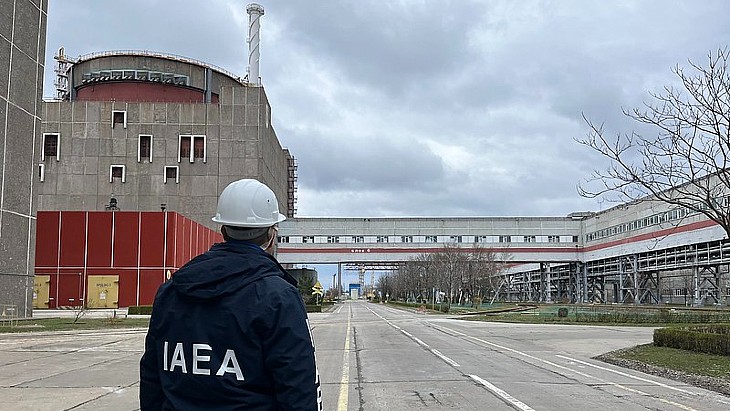In his latest update on the situation at Europe's largest nuclear power plant, which is on the frontline of the Russian and Ukrainian forces, Grossi said that "increased military presence and activity in the region again underlines the importance and urgency of agreeing on the protection of the plant".
He also reported that the latest rotation of staff had taken place - which involves crossing the military front line for both the team arriving, and the team leaving.
The IAEA says that its team have been told by the current management of the plant, which has been under Russian military control since early March 2022, that there are now more than 3000 staff with Rosatom contracts and "another 1000 in the process of approval. Roughly 1000 staff with Energoatom contracts still work at the plant, and others who remain in Energodar (the nearby town where many staff and family live) are occasionally called to work".
The update says "the plant management has confirmed that some staff have had their access blocked, claiming it is for 'security purposes'", and adds that the director general "has repeatedly expressed deep concern about the extremely difficult situation for ZNPP (Zaporizhzhia nuclear power plant) staff and their families, and the effect it has on nuclear safety and security".
The six-unit nuclear power plant continues to rely on one remaining functioning 750 kV power line for off-site power, although efforts to repair and reinstate a back-up line continue. Since December, the IAEA team has not had access to the nearby thermal power plant through which back-up power has in the past also been provided to the nuclear plant. The update says the IAEA team were told two weeks ago "access would be granted in the coming days".
"The team observed, and following questions were subsequently informed, that a large piece of equipment being transported into the turbine hall of Unit 3 was a transformer to replace the damaged 'Kakhovka' node in the ZNPP open switchyard. The Kakhovka line is one of the four 750 kV lines that were operational before the military conflict. This line is linked to the currently Russian-controlled electrical grid, to the south of the ZNPP site," the IAEA update said.
Since the war began external power has been lost on a number of occasions with the plant having to rely on emergency diesel generators for the power necessary for safety functions. Grossi has spent months speaking to both sides in the conflict seeking agreement on safety and protection measures to reduce the risks to the plant.





_47120.jpg)

_23621.jpg)






